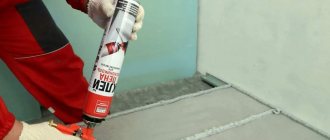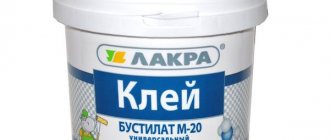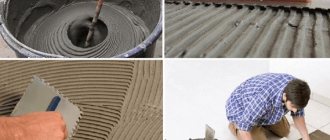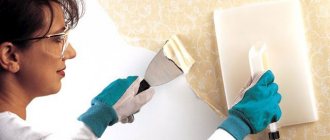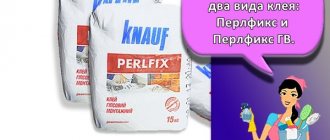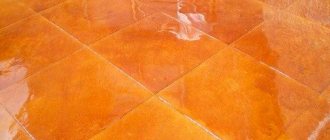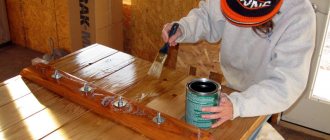Properties and performance characteristics of EDP glue
Positive properties of epoxy glue:
- Insignificant percentage of shrinkage during hardening.
- Increased strength characteristics, resistance to mechanical loads.
- Compatibility with almost all commonly used materials.
- High level of electrical insulation characteristics (EDP glue acts as a dielectric).
- Resistant to all types of liquids.
Cured and finally cured EDP adhesive can be subjected to various types of post-processing.
If necessary, this adhesive composition:
- Polished.
- Grinding.
- They are sawing.
- They drill.
- Painted.
Important! If it is necessary to color EAF glue, it is recommended to mix the coloring pigments with the epoxy resin before the hardener is added to it.
What it is
The main substance of this type of glue is epoxy resin, which is a synthetic oligomer that cannot be used in its pure form. Each manufacturer's liquid two-component epoxy glue can be presented in different consistencies - liquid or solid, and differs in shade from honey color to dark tones. The two main components of epoxy adhesive are resin and hardeners, which give it adhesive properties. Hardeners can be polyethylene, polyamine, anhydride, triethylenetetramine. It is this tandem that forms a particularly strong polymer structure.
Scope of application
Manufacturers make this adhesive composition using various modifiers. Product form: syringe or 280 g bottle. EDP glue in a syringe is easier to use, because it makes it easier to dose the adhesive solution and more accurately apply it to the surface.
The composition can be used for gluing surfaces:
- Ceramic.
- Porcelain stoneware.
- Porcelain.
- Wooden.
- Glass.
- Metal, steel.
- Plastic and other finishing and decorative materials.
Important! It is prohibited to use EDP glue for gluing materials and products that will come into contact with food during use.
The adhesive composition has a liquid structure, so it is often used to impregnate fillers (fabric, paper, sawdust, fiberglass, fiberglass, etc.). Similar work is carried out in various fields of industry: shipbuilding, mechanical engineering, machine tool building, etc.
In the domestic field, EDP glue is used for the restoration of cast iron and steel bathtubs, plumbing equipment, interior and furniture elements, various household appliances and electronics, as well as for the restoration of sports equipment, boats and other items.
Characteristics of “Poxipol”
The glue has the property of creating a seam that is similar in quality to a joint obtained by metal welding.
Its technical characteristics:
- connection force – 993 N;
- shear stress – 22 MPa;
- hardness (48 hours after application) – 76-78 D on the Shore scale;
- tensile strength – 8 MPa;
- density – 1.16-1.6 g/cm³;
- consumption – 200-300 g per 1 m².
The product is easily applied to any materials, does not spread, and does not slide even from vertical surfaces. After drying, it retains its shape and volume well, is not subject to deformation, and does not leave visible marks. Outdoor cold welding is non-toxic and has no pungent odor, so it is used in the repair of toys and children's furniture.
The adhesive joint withstands water, precipitation, mineral and vegetable oils well. The adhesive shows good resistance to the influence of gasoline, toluene, plasticizers, sodium hydroxide, acids used in everyday life and construction (sulfuric, nitric, phosphoric, hydrochloric, acetic, etc.).
The resistance of welding to heat and cold is also at a high level. The operating temperature of the seam is +120°C, it does not deform when freezing and prolonged exposure to temperatures down to -40°C.
It is impossible to glue parts under water, but they are allowed to be placed in liquid 10 minutes after Poxipol has hardened. The composition does not delaminate and does not lose its properties even with constant immersion. It should be taken into account that the adhesive seam should not come into contact with water intended for keeping fish and other living creatures, as it releases toxins.
Recommended reading: How to use a welding pencil
The glue does not flow off the surface.
Instructions for use
Hardening of the prepared epoxy universal EAF glue occurs almost instantly, so when carrying out work you need to use small portions of the adhesive solution. All surfaces to be joined must be prepared in advance.
Preparation for gluing
The surface to be treated must be cleaned, oil and grease stains removed from it using an alcohol composition. A properly prepared surface is dry and clean. If required, to improve the adhesion of the surfaces to be joined, they can be pre-treated with fine-grain sandpaper. This is true for metal, wood, dense plastic, and ceramic surfaces.
Preparation of EDF glue
The instructions for use and use of EDP glue say that the epoxy resin and hardener must be mixed immediately before use. Mixing is usually done in a 10:1 ratio.
The mixing process is as follows:
- The bottle of epoxy resin must be placed in hot water.
- Leave it for 8-12 minutes.
- Then mix the resin with the hardener in accordance with the proportion recommended by the manufacturer.
- Mix the ingredients for about 2-3 minutes.
- Then you need to wait 5-8 minutes for the air bubbles to come out.
- The prepared solution must be used within 60-90 minutes until it gelatinizes.
Therefore, if the work on gluing surfaces is not completed within 1 hour, then it is not recommended to immediately prepare a large amount of adhesive composition. You can cook it in portions. If EDP glue in the prepared state is left in the open air for more than 2 hours, it loses almost all of its working properties, so it is not advisable to use it.
Fillers
If desired or necessary, special fillers can be used that can adjust or improve the performance characteristics of EAF glue. Such fillers include coloring pigments, plasticizers, modifiers, etc. Before use, you need to clarify whether they are specifically suitable for EDP glue.
Experts do not recommend using modifiers and plasticizers on your own for ready-made adhesive compositions. Thoughtless addition of additives can lead to EAF adhesive completely losing its performance characteristics. Coloring pigments can be added without restrictions, because they do not have any effect on the performance properties of the prepared adhesive solution.
Application
The prepared adhesive composition must be applied in a thin layer to both surfaces to be bonded. Then they are connected and pressed against each other as tightly as possible.
Important! It is not recommended to press by hand; it is best to use a vice or place heavy objects.
If, after gluing, excess EDF glue appears, then it must be promptly removed, because After hardening, this will be extremely difficult to do. The surface must be left pressed until the solution has completely hardened.
The duration of the hardening process of EAF glue is about 24 hours (if the air temperature is in the range from +15 to +25 degrees). If the temperature is lower, the adhesive composition will take longer to harden. It is not recommended to carry out gluing work using this adhesive solution at sub-zero temperatures, because the effectiveness of EAF glue will be in question in this case.
Precautionary measures
Gluing work using EDP glue must be carried out in a ventilated area or in outdoor conditions. It is necessary to open all the windows in the room, turn on forced ventilation, if available.
Important! It is strongly recommended to use personal protective equipment: gloves, goggles, respirator. Do not allow the components or the finished solution to come into contact with the skin or mucous membranes.
If EDP glue gets on your skin, you must quickly wash it off with running water. If required, the area where the solution enters should also be treated with an alcohol solution. If the adhesive composition gets into the eyes or mucous membranes, it is recommended to immediately seek professional medical help from a medical facility.
Advantages and disadvantages
The advantages of the composition include the following characteristics:
- Versatility. The mixture is used for gluing a wide variety of materials, so it is used to repair almost all household products.
- High speed. The adhesive is quick to prepare, easy to apply and dries completely in 1 day, making it suitable for urgent repairs of essential items (for example, plumbing fixtures).
- Ease of use. To work with glue, no special tools or skills are required. Everything you need is sold complete with tubes, and even a novice master can perform simple repairs using the composition.
- Convenience. The adhesive mixture does not flow, does not change shape or volume when applied, and easily lays on any surface, which makes working with it simple and comfortable.
- Possibility of creating several seams in the same place. A new layer of “Poxipol” is freely applied over the hardened one, which makes it possible to correct unevenness and defects without any problems.
- Aesthetic qualities. The transparent mixture is practically invisible and leaves no traces after drying. Matte is available in several colors, which makes it possible to choose compositions that are suitable for different surfaces and do not spoil their appearance.
- Water resistance. The substance retains all its positive qualities even with regular contact with liquid, which makes it indispensable for repairing pipes, plumbing, containers, tanks, boats and ships.
- Duration of operation. The strength and durability of an adhesive seam is practically equal to that of a welded joint.
- Resistance to environmental influences. “Poxipol” retains its properties in all weather conditions and is not affected by moisture, temperature and other external factors.
- No risk of spreading or drip formation. This makes it convenient to use glue on vertical and inclined surfaces.
- Health safety. The product does not contain solvents, therefore in dry form it is safe for humans, which allows it to be used in the repair of residential premises.
- Possibility of processing the seam area after hardening. The fastened parts can be freely drilled, cut, sawed, painted, varnished: this does not affect the bonding strength and other characteristics.
- Low consumption. “Poxipol” has a moderate viscosity and is not prone to shrinkage, which makes it possible to treat a fairly large surface with 1 tube of the substance.
- Solidifies at room temperature. This eliminates the need to use heating sources.
- Maintains volume after drying. This feature helps to better control the final layer thickness.
- Availability. The adhesive composition of this brand is sold in almost any hardware store.
- Simplicity and clarity of instructions for use.
Disadvantages of “Poxipol”:
- Low tensile strength. This feature makes the use of glue undesirable when repairing products subject to constant movement, vibration, deformation, and high mechanical loads.
- The need to independently prepare the composition. Problems may arise during the mixing process, since measuring the exact proportion of components is quite difficult, and its violation leads to a decrease in the quality of welding.
- Incompatibility with some surfaces: Teflon, polyethylene, polypropylene. When in contact with “Poxipol” they are gradually destroyed, so its use for gluing them is excluded.
- Low melting point. The composition burns at 120°C, which is sufficient for use at home, but makes the mixture unsuitable for use in industrial conditions.
- Toxicity if released into water. The glue is not suitable for repairing aquariums, fish tanks, structures adjacent to natural reservoirs, etc.
- Short shelf life after preparation. It is necessary to work quickly with Poxipol, otherwise the mixture will quickly harden and become unsuitable for further use.
- Packaged in small packages. It causes inconvenience when carrying out full-scale repairs, when a large amount of adhesive is required.
- High price. Glue from an Argentine manufacturer is more expensive than domestic analogues.
We recommend reading: How to use flux for welding
When correcting breakdowns of household items, plumbing fixtures, and auto parts, the weaknesses of “Poxipol” do not matter. Therefore, it is considered one of the best compounds for carrying out this type of repair work.
Transportation and storage
Transportation of EDP glue must be carried out in covered vehicles or railway transport, in accordance with the transportation rules established by GOST.
Products of this type must be stored in dry, dark rooms with a temperature range from +5 to +30 °C. It is not allowed to store the adhesive composition with the original packaging opened. Do not allow liquid to come into contact with the packaging or exposure to ultraviolet radiation. The recommended storage period is no more than 2 years. After this period, the performance characteristics of the product deteriorate, but it is still suitable for use.
Important! At home, such products must be stored in a dark, dry place, inaccessible to children and inaccessible to moisture. It is not recommended to store opened original packaging for a long time. If the adhesive composition has been used and is no longer required, it is recommended to dispose of it in accordance with the rules for the disposal of similar chemical solutions.
Precautions during operation
Due to the rather specific smell, you need to work with glue in a well-ventilated area. Due to the increased flammability, you should not do gluing near an open source of fire or heat. You need to wear thick rubber gloves when working with the composition, as it can cause an allergic reaction if it comes into contact with the skin. When using a hardener, it is important to remember that this is a toxic substance, and therefore it is better to protect the respiratory tract and nasal mucosa with a respirator. Similar requirements apply when working with a fast-curing adhesive composition.
You need to wear thick rubber gloves when working with the composition, as it can cause an allergic reaction if it comes into contact with the skin.
Working with epoxy should be leisurely and very careful, and then you can get the desired result in the shortest possible time and at a budget price.
Fast curing EDP adhesive
A special type of adhesive composition, produced in packages of 45 and 250 g. This is a two-component EAF adhesive, the curing process of which occurs much faster than in the case of traditional EAF. This composition has the following scope of application:
- Bonding surfaces made of metal and composite materials, alloys, as well as ceramic, glass and products made from other materials.
- Repair work, sealing of various equipment.
- Repairing defects, cracks, chips and other surface imperfections.
Fast-curing EDP adhesive gains maximum strength within 5-7 hours after application to the surface. Gluing work can be carried out at temperatures from +5 to 35 °C. The process of applying the adhesive composition is quite simple. The finished seam can be processed even before polymerization is completed.
Using epoxy glue (2 videos)
Epoxy glue(22 photos)
Glue composition
EDP glue is based on epoxy resin. This substance is the component that gives the product its main properties. In addition to resin, the adhesive contains a hardener and additives that improve technical qualities.
The package contains the base substance and a bottle of hardener. Both compounds must be combined before use.
Contents of the EDP glue package
Universal two-component adhesive – a product of chemical processing. The product has a complex composition. After mixing the glue with the hardener, a chemical reaction occurs, as a result of which the substance acquires working properties.
The composition of the product depends on its purpose and area of application. Solvents and plasticizers can be added to the mixture. The following chemicals are used as a hardener:
- polymers (organosilicon resins, rubbers);
- diamines;
- aminoamides;
- polyamines.
The ratio of components must be observed. Increasing the amount of hardener leads to a decrease in performance qualities.
